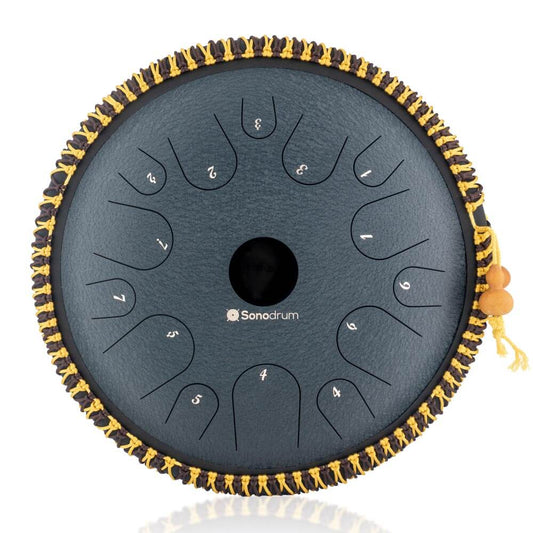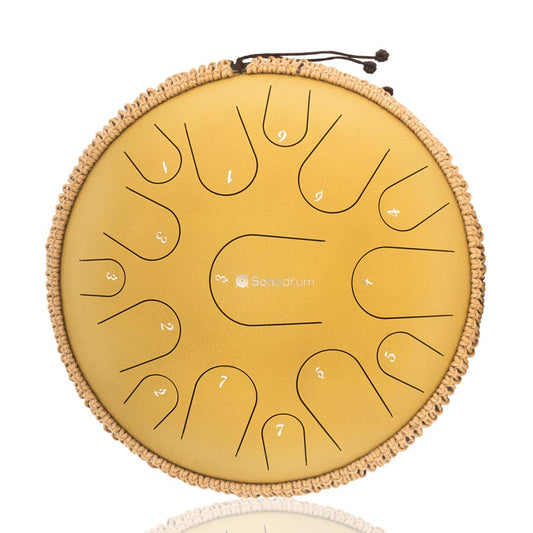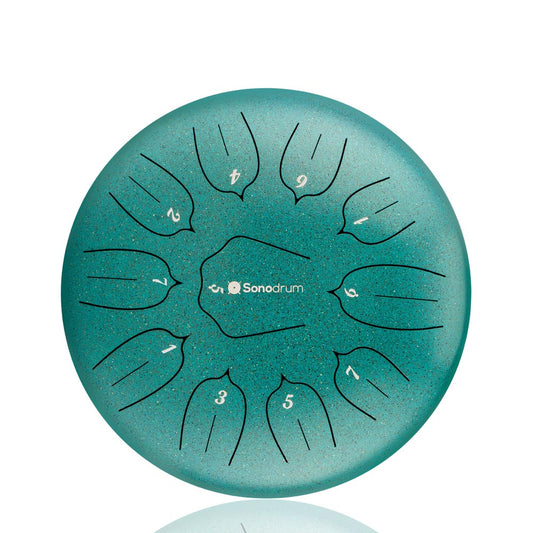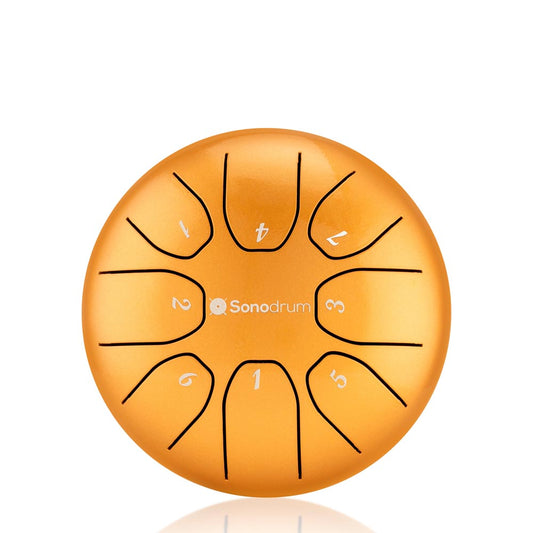Welcome to the enchanting world of tongue drum recording, where the art of music production meets the beauty of sound exploration. Tongue drums, celebrated for their melodic and soothing tones, have captured the hearts of musicians and producers alike. Their versatility across genres—ranging from ambient to world music, and even contemporary pop—makes them a compelling choice for creating captivating soundscapes.
In this article, we will guide you through the process of crafting your sonic journey with tongue drums. Whether you are a seasoned producer or a curious musician, you will find valuable insights into how to effectively record and produce these unique instruments, allowing your creativity to flourish.
Key Takeaways
- Tongue drums offer unique sounds that enhance music production.
- Their versatility allows for use across various musical genres.
- Understanding recording techniques can elevate your sonic journey.
- Acoustic treatment improves the quality of your recordings.
- Incorporating tongue drums can inspire creativity in songwriting.
- They are ideal for meditation and relaxation experiences.
- Collaborating with other musicians can expand your creative horizons.
The Magic of Tongue Drums in Music Production
Tongue drums, captivating musical instruments, have grown in popularity among musicians and producers alike. These unique percussion instruments are renowned for their soothing melodies and vibrant tones. The specific design of a tongue drum contributes to its enchanting sounds, inviting both novice and seasoned musicians to explore their melodic potential.
What is a Tongue Drum?
A tongue drum is a percussion instrument typically crafted from steel or wood, featuring ridged tongues that vibrate to produce sound. Each tongue is finely tuned, allowing for specific notes to be played effortlessly. As a result, the description of tongue drums often highlights their accessibility, making them a perfect choice for individuals seeking to delve into music creation without extensive training.
Unique Sounds and Tones
The sound produced by a tongue drum is often described as ethereal, blending harmoniously with various genres. Musicians appreciate the distinct characteristics each drum can offer based on its size and tuning. Players can create melodic lines and rhythmic patterns that resonate deeply, giving rise to an expressive performance.
The Role of Tongue Drums in Different Genres
This versatile musical instrument finds its place across diverse genres, from ambient and world music to contemporary pop and jazz. The adaptability of tongue drums enables them to complement vocals, guitar, or electronic beats. Tongue Drums USA and other esteemed makers craft various models catering to different styles, including flow and chakra tongue drums, each tailored to evoke specific moods and atmospheres.
Setting Up Your Recording Space for Tongue Drums
Creating the perfect environment for tongue drum recording involves the right choice of recording equipment and proper acoustic treatment. Capturing the unique tones of tongue drums requires a good microphone, an audio interface, and quality recording software. Each piece of equipment plays a critical role in achieving optimal sound.
Essential Equipment for Optimal Sound
When selecting recording equipment, consider options that complement the sound of the tongue drum. Microphones, particularly condenser and dynamic types, are essential. The Shure SM57 microphone is known for its versatility and clarity, making it an excellent choice for tongue drum recording. Pair it with an audio interface like the Focusrite Scarlett to ensure high-quality sound transmission to your recording software. This combination provides a solid foundation for capturing those intricate tones.
| Equipment | Type | Recommended Model |
|---|---|---|
| Microphone | Dynamic | Shure SM57 |
| Microphone | Condenser | Audio-Technica AT2020 |
| Audio Interface | USB | Focusrite Scarlett 2i2 |
| Recording Software | Digital Audio Workstation | Adobe Audition |
Acoustic Treatment Tips
To enhance the quality of tongue drum recording, it is essential to create an acoustically balanced space. Adding sound absorption panels to walls can minimize reflections and reverberation, ensuring a clearer recording. Utilizing bass traps in the corners helps manage low frequencies. Consider using area rugs to dampen sound on hard floors. These elements work together to create an optimal sound environment that truly showcases the distinctive qualities of the tongue drum.

Create Your Own Sound Journey: Recording and Producing with a Tongue Drum
When embarking on the journey of tongue drum production, understanding how to capture its unique tones is essential. The right microphone placement can significantly enhance the sound quality of your recordings. It's crucial to balance the nuances of close-miking techniques with the broader ambiance of the recording space.
Choosing the Right Microphone and Placement
Selecting an appropriate microphone involves considering the sound quality you wish to achieve. Dynamic microphones are often robust for capturing percussive sounds, while condenser microphones excel in detail and clarity. For effective microphone placement, you might consider:
- Close Miking: Positioning the microphone 6 to 12 inches from the tongue drum focuses on capturing sharp, articulated sounds. This method is ideal for emphasizing individual notes.
- Ambient Recording: Placing the microphone further away allows natural room acoustics to influence the sound. This technique can create a richer sound texture, perfect for immersive recordings.
Recording Techniques for Captivating Sounds
Implementing various recording techniques can elevate your tongue drum tracks. Experimenting with different mic placements can reveal a range of timbres. Try recording multiple takes and layering them to create a fuller sound. Techniques such as using a stereo pair of mics can capture the stereo image of the instrument well, providing depth and fullness.
Editing and Mixing Tips for Tongue Drum Tracks
Post-recording, focus on editing and mixing to enhance your tongue drum production. Utilizing equalization can help emphasize the clarity of each tone. Adding slight reverb may create a sense of space without overwhelming the natural sound. Balancing levels while ensuring the unique characteristics of each recording remains intact can elevate your final product.
Incorporating Tongue Drums into Your Creative Process
Tongue drums offer a wealth of possibilities for enhancing your songwriting journey. Their unique tones create an inviting soundscape, perfect for sparking inspiration with tongue drums. Musicians can approach songwriting using these instruments not just as traditional rhythmic accompaniments but as integral components guiding the creative process.
Songwriting Inspiration with Tongue Drums
The rich sound palette of tongue drums allows for different emotional expressions within songwriting. When creating melodies, let the soothing tones paint a vivid picture. Experiment with varying tempo and rhythm to see how each change influences your lyrics and themes. Songs like "Weightless" by Marconi Union illustrate how integrating tongue drum melodies can elevate composition.
Using Tongue Drums for Meditation and Relaxation
Tongue drums serve as excellent tools for meditation, eliminating distractions and focusing the mind. Many find that playing or listening to these instruments fosters an atmosphere conducive to relaxation and creativity. By incorporating gentle tongue drum music during meditation, you invite new ideas and enhance your songwriting sessions.
Collaboration Ideas with Other Musicians
Your creative process can flourish when collaborating with musicians from diverse backgrounds. Invite fellow artists to join you in jam sessions featuring tongue drums. This can spark innovative ideas and bring fresh dynamics into your songwriting. Consider arranging sessions where each collaborator brings a unique instrument to pair with the captivating sounds of the tongue drum, making exploration both enjoyable and productive.
Conclusion
In conclusion, the tongue drum journey is an enriching exploration of sounds that invites both musicians and enthusiasts alike to dive deep into the world of rhythm and melody. Throughout this article, we examined the unique attributes of tongue drums, highlighting their ability to create captivating soundscapes and enhance various musical genres.
We discussed the essential techniques for recording and producing tongue drum music, emphasizing the importance of proper equipment and acoustic treatment. Furthermore, incorporating tongue drums in your creative process can spark inspiration, serve as tools for meditation, and foster collaboration among artists.
As you embark on your own exploration of sounds, don’t hesitate to experiment with this versatile instrument. The power of tongue drums lies in their potential to unlock new dimensions in musical expression, making them a remarkable addition to any producer’s toolkit. Embrace the magic of tongue drums and see where your creativity takes you!
FAQ
What are tongue drums made of?
Tongue drums can be made from various materials, including steel and wood. Steel tongue drums are known for their rich, resonant tones, while wooden tongue drums often offer a warmer, softer sound.
How do I record a tongue drum effectively?
To record a tongue drum effectively, it's essential to choose the right microphones. Condenser microphones are great for capturing the delicate nuances, while dynamic mics like the Shure SM57 can provide good sound quality for close miking. Experiment with microphone placement to find the best sound.
Can tongue drums be used in different music genres?
Absolutely! Tongue drums are incredibly versatile and can be incorporated into various genres, including ambient, world music, and even contemporary pop, adding a unique layer to your soundscapes.
Do I need acoustic treatment in my recording space?
Yes, acoustic treatment is important for achieving optimal sound quality when recording tongue drums. Consider adding sound-absorbing panels or bass traps to minimize unwanted reflections and echo in your recording space.
What software can I use for mixing tongue drum tracks?
There are various software options available for mixing tongue drum tracks, such as Ableton Live, Logic Pro X, and Pro Tools. Each offers unique features to help you craft your sound effectively.
How can I use tongue drums for meditation?
Tongue drums produce soothing, melodic tones that make them ideal for meditation and relaxation. Use them during your meditation practice to create a calming atmosphere and enhance your mindfulness experience.
What are some creative ways to collaborate with other musicians using tongue drums?
You can collaborate with singers, guitarists, or other instrumentalists by using the tongue drum as a rhythm or melodic element in your compositions. Explore improvisation sessions or songwriting workshops to inspire creativity together.




